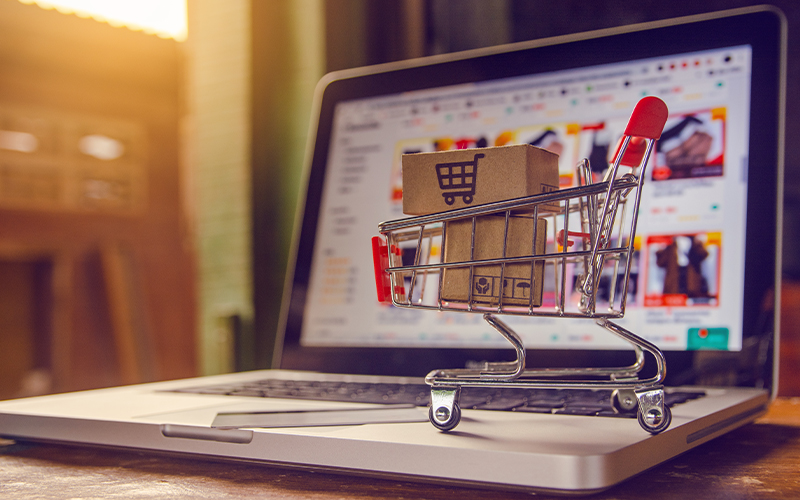Digital Interactive Services
Five ways to use Augmented Reality in your marketing strategy
A consumer-driven market keeps marketers on their toes. Brands must reform their marketing strategies to accommodate changing consumer desires influenced by technological advances. Today, for example, Augmented Reality (AR) technology is a hot topic. Marketing professionals must bear these in mind while designing the marketing road map so that they can drive sales and enhance the brand value.
More about AR. AR is a technology that augments the view of the world around us with additional information or graphics. An example of AR would be a 3D animal projected in your space from your Android device’s Google app. Does it sound familiar? Though still in its infancy, many businesses have benefited from it.
Using AR in marketing strategies
Marketers who realise the potential of AR have begun to use it to promote their businesses and increase their sales. Here are a few ways where AR can be employed in your marketing strategy:
-
Impress your brand’s name in style
Allow sampling before the purchase
Product demonstration
Augment assistance
Augment business cards and brochures
It takes a long time to create a brand. Sales figures cannot be raised by superior quality products and impeccable service alone. Your market reach and customer base will be limited unless your brand becomes visible and well-known. In this case, brand awareness is essential. It remains a common challenge for marketers even today.
Thankfully, AR can help here. By using projected images and graphics, AR can bring your brand's story to life, imprinting your brand's name in the minds of people.
A good example is the wine company '19 Crimes'. A unique story of defiance and perseverance of convicts banished to Australia after the 1776 revolution was told through AR. The effect was impressive. The brand gained immediate recognition, sales figures rose by about 40 percent between its release in 2017 and 2019, and the company moved on to create other brands as well. Due to the buzz generated by the application, the marketing team decided to make it a major part of their marketing efforts.
Having your brand recognised and your products or services recognisable is the first step in a long battle for marketers.
Would it not be helpful to know how a centre-table looks in a particular spot? Potential customers have always wanted to test products before spending on them. Home-fittings, cosmetics, automobiles, television, and many other products fall in this try-and-buy category. Understanding the customer’s need to do this, marketers have come up with an innovative way, namely AR, to make this happen.
By using AR, customers can experiment with a novel look or sample clothing items without the need to use the actual items. This way, customers can get a better sentience* for the product through realistic product visualisation. Plus, enterprises can eliminate the need to maintain a large physical inventory.
AR is a game-changer for large product manufacturers. A predecessor to AR was to transport such products to a mutually agreed-upon location, invite clients to your location, or rely on engineering drawings and photographs to display products. With AR, clients can now view products from the comfort of their office or home. Furthermore, it eliminates the effort, time, and cost of commuting.
Even for small products, AR is the perfect way to demo products at trade-related events. In comparison to images, video presentations, or mock-ups, they offer people a more immersive experience.
In 2015, auto giant Hyundai created the first augmented manual for drivers, a modern take on the traditional manual. Two years later, Mercedes took this to the next level and launched the app 'Ask Mercedes' which combines the intelligence of AI with an AR interface to answer a host of user queries.
AR user manuals are growing in popularity. They are helping customers with unboxing, product installation, details on product features and troubleshooting when the need arises. All this, in a paperless way.
A business card with augmented features is sure to stand out. Imagine a card ‘converting’ to a screen for a product pitch video, or a 3D model conjuring up out of thin air! A strategically placed virtual component when scanned can bring this about. What a heightened sense of engagement that must offer!
This is the future of AR-enhanced business materials. Not just business cards, but even brochures and other printed materials can use such virtual components that can be scanned to add dynamicity to a static page. Such interactive elements make a lasting impression and boost customer engagement.
Power a unique AR experience
Customers are picky and detest being advertised to. It is advisable to change your marketing in this situation from an event to an encounter that leaves a long-lasting impression. What was once only seen in science fiction films is now a reality thanks to AR. However, brands have only just begun to explore the possibilities.
* For organizations on the digital transformation journey, agility is key in responding to a rapidly changing technology and business landscape. Now more than ever, it is crucial to deliver and exceed on organizational expectations with a robust digital mindset backed by innovation. Enabling businesses to sense, learn, respond, and evolve like a living organism, will be imperative for business excellence going forward. A comprehensive, yet modular suite of services is doing exactly that. Equipping organizations with intuitive decision-making automatically at scale, actionable insights based on real-time solutions, anytime/anywhere experience, and in-depth data visibility across functions leading to hyper-productivity, Live Enterprise is building connected organizations that are innovating collaboratively for the future.






